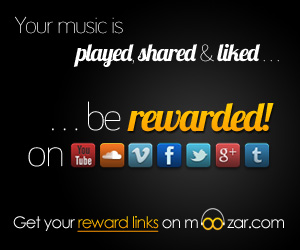By Carolyn Heneghan
There’s a new musically-inclined technological development slated to sweep music fans deeper into the 21st century and its rapidly evolving tech culture. Music discovery apps for mobile phones, tablets, and PCs have become one of the latest trends in the industry’s shift toward near exclusivity in digital consumption, and the number of them available to consumers is increasing at a significant rate.
With as much old and new music that’s available these days, it’s a wonder anyone has the time, energy, or patience to sift through millions of fledgling and established artists to find their next new favorite. To audiophiles’ delight, the music market has been flooded with discovery apps that aim to satisfy the whims of fervent and curious music lovers alike.
But this flood has ultimately become a deluge as app developers race to create the next Pandora, Spotify, or Shazam. Both cross-platform and cross-genre, these apps have created a mind-boggling myriad of ways to expand your choices for music-listening depending on your particular interests. There are so many in fact that you very nearly need a music discovery app discovery app to sort through them all.
This scenario begs the question, “How can all of these discovery apps coexist in the music tech marketplace?” For one thing, people will ultimately choose their favorites, and share those choices with their social media followings. Inevitably one or two will rise to the top, like Pandora and Spotify.
But music consumers also love variety, in both the music they listen to and they ways in which they find it. To accommodate, developers have created apps dedicated to specific genres, such as Beat Bang for electronic music, and Pocket Hipster for indie rock. Then of course there are the more generalized apps that work on building the most extensive library possible to give you a little bit of everything, like the aforementioned top two.
One point to consider is how more new, up-and-coming, and local bands can gain exposure from these technological developments. There are more localized apps, such as Thrillcall, which offers music listings for major cities, but there are notably less apps for discovering recorded music in a particular town.
And should these artists find a way to have their music included in one of these apps, is it worthwhile to decipher algorithms involved to bring their music to the top of the lists? Ensuring digital distributors manipulate keywords and meta-tagging, akin to the SEO techniques employed by websites. Maybe they’re based more along the lines of what Pandora calls focus traits, or the musical attributes of a song, such as tonality and syncopation. Or since many services determine rank based on “likes” and “shares” via social media or within the app itself, artists should encourage their fans to engage in that kind of behavior.
As these streaming discovery apps become the preferred method of the way people listen to music, learning to manipulate these algorithms will become more important for artists of all stripes. Particularly for those trying to make a name for themselves, experimentation, experience, and examining the techniques of the most successful artists will become as imperative as any other marketing initiative. In turn, management, record labels, and promoters will fall in line, taking notice of the shift and including these tactics in their standard publicity strategy.
Only time will tell how these discovery apps will change the music sharing atmosphere for artists and consumers alike. But if Pandora’s 175 million users is any indication, there seems to be no question that these streaming services have changed the face of music discovery.

















Comments are closed.